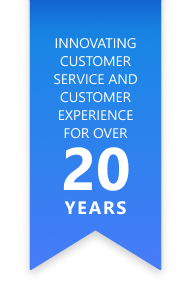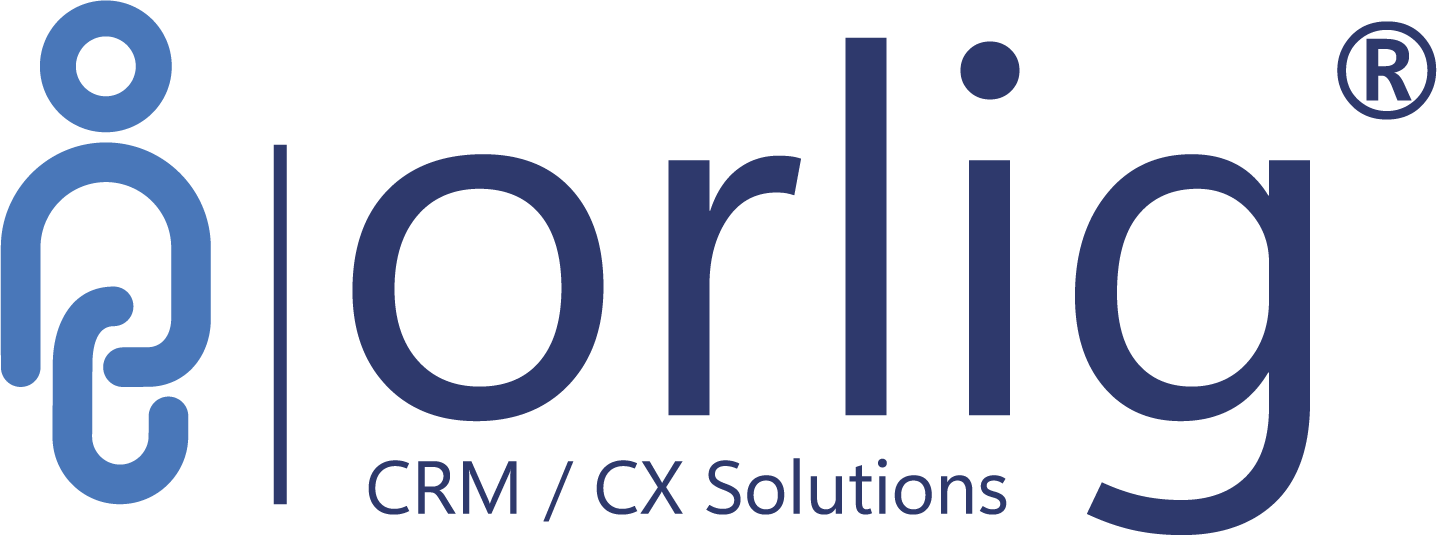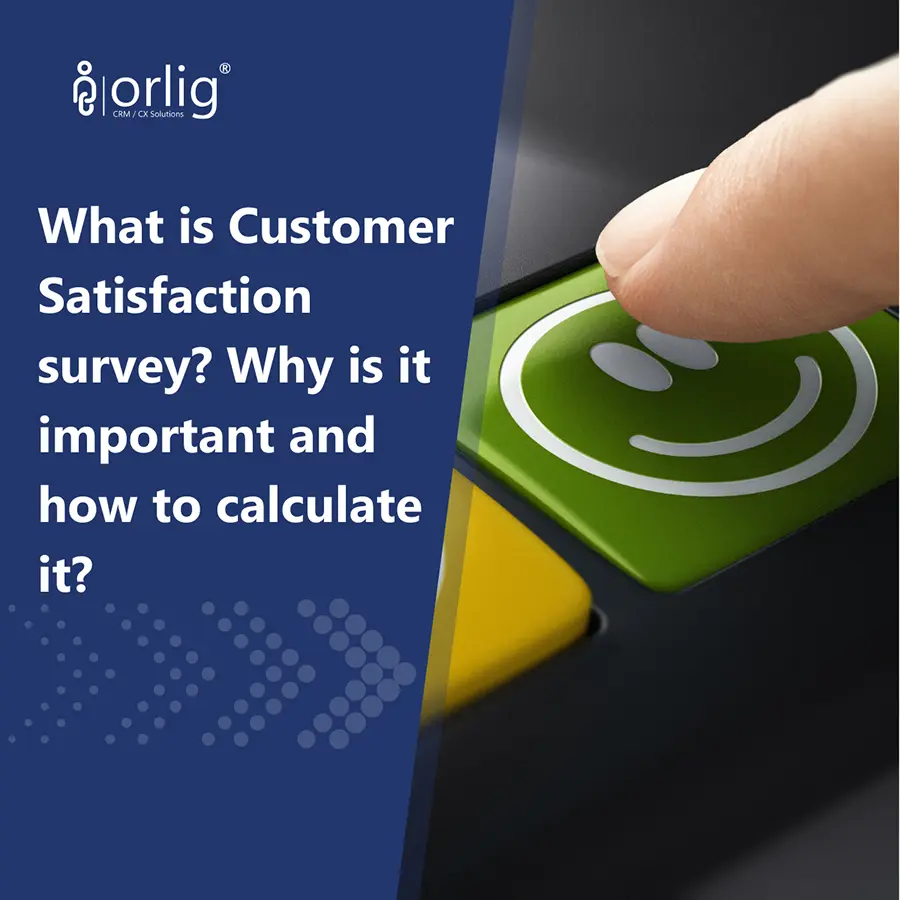
Customer satisfaction is a pivotal aspect of any successful business. Ensuring that customers are happy and their expectations are met is crucial for retention, loyalty, and overall business performance. One of the most effective ways to measure this is through the Customer Satisfaction Score (CSAT). This article will delve into what CSAT is, why it is important, and how to measure and improve it, ultimately showcasing how CSAT can be a powerful tool in your business strategy.
Customer Satisfaction Score (CSAT) is a fundamental metric used by businesses to gauge the satisfaction levels of their customers. It provides direct insights into how well a company meets or exceeds customer expectations. Maintaining high levels of customer satisfaction is essential for retaining customers, building loyalty, and fostering positive word-of-mouth. As businesses strive to enhance customer experiences, understanding and effectively measuring CSAT becomes increasingly important.
What is CSAT?
Definition
CSAT, or Customer Satisfaction Score, is a key performance indicator that measures how satisfied customers are with a specific aspect of a company’s products or services. It is typically calculated based on customer responses to a survey question, often asking them to rate their satisfaction on a scale. A common scale used is the 5-point Likert scale, where 1 means “very dissatisfied” and 5 means “very satisfied.”
Calculation Method
To calculate CSAT, you divide the number of satisfied customers (those who rated 4 or 5) by the total number of respondents and multiply by 100 to get a percentage. This simple yet powerful metric provides a clear picture of customer contentment and highlights areas needing improvement.

For instance, if 80 out of 100 customers rate their satisfaction as 4 or 5, the CSAT score would be 80%.
Common Rating Scales
While the 5-point Likert scale is widely used, other scales include:
- 3-Point Scale: Simplifies responses into “Dissatisfied,” “Neutral,” and “Satisfied.”
- 7-Point Scale: Provides more granularity, capturing slight variations in satisfaction levels.
- 10-Point Scale: Offers the most detailed feedback but may be more complex for respondents.
Choosing the right scale depends on your specific needs and the level of detail required from your customer feedback.

Why is CSAT Important?
Meeting Customer Expectations
CSAT is a vital metric because it directly reflects how well your business is meeting customer expectations and needs. High CSAT scores indicate that customers are happy with your value proposition, quality, and service. Conversely, low scores suggest gaps in your offerings, performance, or communication.
- Alignment with Customer Needs: By regularly measuring CSAT, businesses can ensure their products and services align with customer needs and expectations. This alignment is crucial for maintaining customer satisfaction and loyalty.
- Service Quality: High CSAT scores often correlate with high service quality. Monitoring CSAT allows businesses to identify and address service issues promptly, ensuring a consistently positive customer experience.
Influencing Retention, Loyalty, and Advocacy
- Customer Retention: Satisfied customers are more likely to remain loyal to a brand, reducing churn rates and ensuring steady revenue streams. Retaining customers is often more cost-effective than acquiring new ones.
- Loyalty Programs: High CSAT scores can be used to identify loyal customers who may benefit from targeted loyalty programs, enhancing their lifetime value.
- Brand Advocacy: Satisfied customers are more likely to recommend your business to others, acting as brand advocates. This word-of-mouth marketing can significantly boost your brand’s reputation and attract new customers.
Benchmarking Performance
- Industry Standards: CSAT allows you to benchmark your performance against industry standards and competitors, helping you identify areas for improvement and maintain a competitive edge. Regular benchmarking can reveal trends and shifts in customer expectations.
- Internal Benchmarks: Within your organization, CSAT can be used to compare different departments, teams, or product lines, highlighting areas of excellence and those needing improvement.
Predictive Insights
- Future Behaviors: High CSAT scores can predict future customer behaviors, such as repeat purchases and positive reviews. Conversely, low scores can signal potential churn, enabling preemptive actions to retain at-risk customers.
- Product Development: CSAT feedback can guide product development and improvements, ensuring new features and updates align with customer needs and preferences.

How to Measure CSAT?
Designing Surveys
Crafting effective CSAT surveys involves several key steps:
- Clear and Concise Questions: Ensure your survey questions are clear, concise, and focused on specific aspects of your business. Avoid leading questions that may bias responses.
- Single-Question Surveys: Often, a single-question survey asking “How satisfied are you with [specific aspect]?” is sufficient. This simplicity encourages higher response rates.
- Additional Questions: If needed, include follow-up questions to gather more detailed feedback, such as “What did you like most about our service?” or “What can we improve?”
Methods and Channels for Collecting Feedback
- Email Surveys: Send post-interaction surveys via email to capture feedback after a purchase, service, or support interaction.
- Web Surveys: Embed surveys on your website to gather feedback during or after a visitor’s session.
- Phone Surveys: Conduct phone surveys for a more personal touch, often yielding detailed responses.
- SMS Surveys: Use SMS surveys for quick and convenient feedback collection, ideal for on-the-go customers.
- In-App Surveys: Integrate surveys into your mobile app to capture real-time feedback from app users.
Timing and Frequency
- Post-Interaction Surveys: Send surveys immediately after a customer interaction to capture fresh and relevant feedback.
- Periodic Surveys: Conduct surveys at regular intervals (e.g., quarterly) to monitor long-term satisfaction trends.
- Event-Triggered Surveys: Deploy surveys after significant events, such as product launches or service changes, to gauge customer reactions.
Ensuring High Response Rates
- Incentives: Offer incentives, such as discounts or entry into a prize draw, to encourage survey participation.
- Reminders: Send follow-up reminders to customers who have not yet responded to the survey.
- Ease of Completion: Ensure surveys are short, easy to complete, and accessible on multiple devices.

How to Improve CSAT?
Understanding Drivers of Satisfaction and Dissatisfaction
- Survey Analysis: Regularly analyze survey results to identify common themes and patterns in customer feedback.
- Additional Feedback Sources: Use other feedback sources, such as online reviews, social media comments, and direct customer interactions, to gain a comprehensive understanding of satisfaction drivers.
Addressing Root Causes
- Product Quality: Ensure your products meet high-quality standards and address any reported issues promptly.
- Service Reliability: Provide reliable and consistent service, minimizing disruptions and ensuring timely delivery.
- Ease of Use: Design user-friendly products and services that are easy to navigate and use.
- Responsiveness: Ensure your customer service team is responsive and addresses inquiries and complaints promptly.
- Personalization: Offer personalized experiences that cater to individual customer needs and preferences.
- Empathy: Train your staff to show empathy and understanding during customer interactions.
Using Feedback
- Implementing Changes: Use customer feedback to make data-driven decisions and implement necessary changes.
- Communicating Improvements: Inform customers about the improvements made based on their feedback, demonstrating that you value their input and are committed to enhancing their experience.
Monitoring and Evaluating Impact
- Continuous Monitoring: Regularly monitor CSAT scores to assess the impact of implemented changes and ensure continuous improvement.
- Evaluating Success: Evaluate the success of your initiatives by comparing CSAT scores before and after changes, and make further adjustments as needed.

How to Use CSAT?
Setting Goals
- Realistic Targets: Set realistic and achievable CSAT targets for your customer service team. These targets should be challenging yet attainable.
- Regular Review: Regularly review and adjust targets based on performance trends and business goals.
Identifying Strengths and Weaknesses
- Strengths: Use high CSAT scores to identify areas where your business excels and replicate these practices across other areas.
- Weaknesses: Identify low-scoring areas and prioritize them for improvement efforts.
Segmenting and Profiling Customers
- Customer Segments: Segment customers based on their CSAT scores to tailor your marketing and service strategies. For example, high-scoring customers may receive loyalty rewards, while low-scoring customers may be targeted for retention efforts.
- Customer Profiling: Profile customers to understand their needs, preferences, and behaviors, enabling more personalized and effective interactions.
Leveraging Testimonials and Reviews
- Satisfied Customers: Encourage satisfied customers to leave positive testimonials and reviews, which can be used in marketing materials and on your website.
- Customer Advocacy: Turn satisfied customers into brand advocates who can refer new customers and provide valuable word-of-mouth marketing.
Training and Development
- Employee Training: Use CSAT feedback to identify training needs and develop targeted training programs for your staff.
- Performance Management: Integrate CSAT scores into employee performance management systems, rewarding high performers and providing support to those needing improvement.
Best Practices for Measuring CSAT
Survey Design Tips
- Clarity and Simplicity: Design surveys that are easy to understand and complete. Avoid technical jargon and keep questions straightforward.
- Relevance: Ensure survey questions are relevant to the customer’s recent experience and focus on specific aspects of your business.
Choosing the Right Questions
- Focus on Key Areas: Ask questions that focus on key areas of customer interaction, such as product quality, service delivery, and support interactions.
- Open-Ended Questions: Include open-ended questions to gather detailed feedback and gain deeper insights into customer opinions.
Ensuring High Response Rates
- Accessibility: Make surveys accessible on multiple devices, including desktops, tablets, and smartphones.
- Timing: Send surveys at appropriate times, avoiding busy periods when customers are less likely to respond.
- Personalization: Personalize survey invitations to make them more engaging and increase response rates.
Analyzing and Reporting Results
- Real-Time Analysis: Use tools that provide real-time analysis of survey results, allowing you to quickly identify trends and take action.
- Detailed Reporting: Generate detailed reports that highlight key insights and areas for improvement. Share these reports with relevant stakeholders to inform decision-making.

Common Mistakes in Measuring CSAT
Avoiding Bias
- Neutral Questions: Ensure survey questions are neutral and do not lead respondents towards a particular answer.
- Diverse Sample: Ensure your survey sample is diverse and representative of your customer base to avoid skewed results.
Ensuring Accuracy
- Regular Updates: Regularly update your survey methods and tools to maintain accuracy and relevance.
- Data Validation: Validate survey data to ensure it is accurate and reliable. Remove any incomplete or inconsistent responses.
Misinterpretation of Data
- Contextual Understanding: Analyze survey results within the context of your business environment and industry trends.
- Avoiding Overgeneralization: Avoid making broad generalizations based on limited data. Ensure you have a comprehensive view of customer satisfaction.
Balancing Qualitative and Quantitative Data
- Combining Insights: Use both qualitative and quantitative data to gain a holistic understanding of customer satisfaction. Quantitative data provides measurable metrics, while qualitative data offers deeper insights into customer experiences.
- Storytelling with Data: Combine data with storytelling to convey the full picture of customer satisfaction. Use real customer quotes and anecdotes to illustrate key points.
Tools for Measuring CSAT
Software and Platforms
- SurveyMonkey: A versatile tool that offers customizable templates, automated distribution, and advanced analytics.
- Qualtrics: Provides robust survey capabilities, including real-time feedback collection and integration with other business systems.
- Google Forms: A free and easy-to-use tool for creating and distributing surveys. Ideal for small businesses or simple survey needs.
Features to Look For
- Real-Time Data Collection: Choose tools that offer real-time data collection to quickly identify and address issues.
- Integration with CRM Systems: Ensure the tool can integrate with your CRM system, such as ORLIG CRM, to centralize customer feedback data.
- Advanced Analytics: Look for tools that provide advanced analytics, including trend analysis, segmentation, and predictive insights.
Integration with CRM Systems
- Centralized Data: Integrate CSAT tools with your CRM system to centralize customer feedback data and streamline your feedback process.
- Enhanced Customer Profiles: Use integrated data to enhance customer profiles, providing a comprehensive view of each customer’s satisfaction and interactions with your business.
- Automated Actions: Automate follow-up actions based on CSAT scores, such as triggering support tickets or sending personalized thank-you messages.
CSAT and Business Performance
Correlation with Revenue
- Revenue Growth: High CSAT scores often correlate with increased revenue, as satisfied customers are more likely to make repeat purchases and spend more over time.
- Customer Lifetime Value: Improve customer lifetime value by maintaining high satisfaction levels, encouraging long-term relationships and higher spending.
Impact on Brand Image
- Positive Reviews: High CSAT scores lead to positive reviews and testimonials, enhancing your brand’s image and attracting new customers.
- Reputation Management: Use CSAT feedback to proactively manage your brand’s reputation, addressing issues before they escalate and ensuring positive customer experiences.
Long-term Business Growth
- Sustained Growth: Consistently high CSAT scores contribute to sustained business growth by fostering customer loyalty and advocacy.
- Market Differentiation: Differentiate your business in a competitive market by prioritizing customer satisfaction and using CSAT to drive continuous improvement.
Employee Engagement
- Motivated Workforce: High CSAT scores can boost employee morale and engagement, as satisfied customers often lead to positive work environments.
- Employee Feedback: Use CSAT data to gather employee feedback and identify areas for internal improvement, ensuring a motivated and productive workforce.
Case Studies of High CSAT Impact
Examples from Various Industries
- Retail: A leading retail chain improved its CSAT scores by implementing a robust feedback system and addressing common pain points, resulting in increased customer loyalty and higher sales.
- Hospitality: A luxury hotel chain achieved high CSAT scores by focusing on personalized customer experiences and leveraging real-time feedback to enhance service delivery.
- Technology: A software company boosted its CSAT scores by enhancing product features based on customer feedback and providing exceptional customer support.
Lessons Learned
- Customer-Centric Approach: Successful companies prioritize a customer-centric approach, ensuring every interaction is designed to meet customer needs and exceed expectations.
- Continuous Improvement: High CSAT scores result from a commitment to continuous improvement, using customer feedback to drive ongoing enhancements in products and services.
- Employee Involvement: Engaging employees in the feedback process and empowering them to make customer-focused decisions is crucial for achieving high CSAT scores.
Example of Success Stories
- Company A: By integrating CSAT measurement into its CRM system, Company A was able to track customer satisfaction in real-time and make data-driven improvements, resulting in a 20% increase in customer retention.
- Company B: Company B used CSAT feedback to identify and resolve a major service issue, leading to a significant boost in customer satisfaction and a 15% increase in positive reviews.
- Company C: Through targeted training programs and personalized customer interactions, Company C achieved consistently high CSAT scores, which contributed to a 30% growth in annual revenue.
The Future of CSAT Measurement
Trends and Innovations
- Real-Time Feedback: The future of CSAT measurement lies in real-time feedback collection, allowing businesses to address issues promptly and improve customer experiences.
- Mobile-Friendly Surveys: As mobile usage continues to rise, mobile-friendly surveys will become essential for capturing feedback from on-the-go customers.
- Omni-Channel Feedback: Integrating CSAT measurement across multiple channels (e.g., online, in-store, social media) will provide a comprehensive view of customer satisfaction.
Predictive Analytics
- Anticipating Needs: Predictive analytics can help businesses anticipate customer needs and proactively address potential issues, enhancing satisfaction and loyalty.
- Personalized Experiences: Use predictive insights to deliver personalized experiences that meet individual customer preferences and expectations.
AI and Machine Learning
- Advanced Analysis: AI and machine learning can analyze large datasets to identify patterns and trends in customer satisfaction, providing deeper insights and actionable recommendations.
- Automated Actions: Leverage AI to automate actions based on CSAT scores, such as sending follow-up emails or initiating support tickets for dissatisfied customers.
Customer Journey Mapping
- Holistic View: Map the entire customer journey to understand how different touchpoints impact satisfaction. Use CSAT data to identify and improve key moments of truth.
- Continuous Optimization: Continuously optimize the customer journey based on feedback and satisfaction scores, ensuring a seamless and satisfying experience.
FAQs About CSAT
- How often should we measure CSAT?
Measure CSAT regularly, such as after every customer interaction or at key milestones, to monitor trends and make timely improvements. - Can CSAT surveys be too frequent?
Yes, over-surveying can lead to survey fatigue. Balance frequency to ensure you get enough data without overwhelming customers. - What is a good CSAT score?
A good CSAT score typically ranges from 75% to 85%, indicating that the majority of customers are satisfied. - How can we improve response rates for CSAT surveys?
Make surveys short and easy to complete, offer incentives, and ensure they are relevant to the customer’s recent experience. - Should CSAT be used alone to measure customer satisfaction?
No, combine CSAT with other metrics like Net Promoter Score (NPS) and Customer Effort Score (CES) for a comprehensive view of customer satisfaction. - How does CSAT impact customer retention?
High CSAT scores correlate with higher customer retention rates as satisfied customers are more likely to stay loyal to your brand. - Can CSAT scores predict future customer behavior?
Yes, high CSAT scores can indicate a higher likelihood of repeat purchases and positive referrals, while low scores can signal potential churn. - How should we handle negative feedback in CSAT surveys?
Address negative feedback promptly, show empathy, and take corrective actions. Use it as an opportunity to improve and prevent future issues. - What are the best tools for measuring CSAT?
Popular tools include SurveyMonkey, Qualtrics, and Google Forms. Look for features like real-time data collection, integration with CRM systems, and advanced analytics. - How can we use CSAT data to drive business growth?
Use CSAT data to identify and replicate best practices, address weaknesses, and tailor your marketing and service strategies to enhance customer satisfaction and loyalty.
Conclusion
Measuring Customer Satisfaction Score (CSAT) is crucial for understanding and improving customer satisfaction. By accurately measuring CSAT, addressing the root causes of dissatisfaction, and leveraging customer feedback, businesses can enhance their customer service, drive loyalty, and achieve long-term success.
Implementing best practices and avoiding common mistakes will ensure your CSAT measurement is effective and beneficial for your business. For more information on improving customer satisfaction, visit ORLIG CRM and discover how our solutions can help you achieve higher CSAT scores and better customer experiences.




